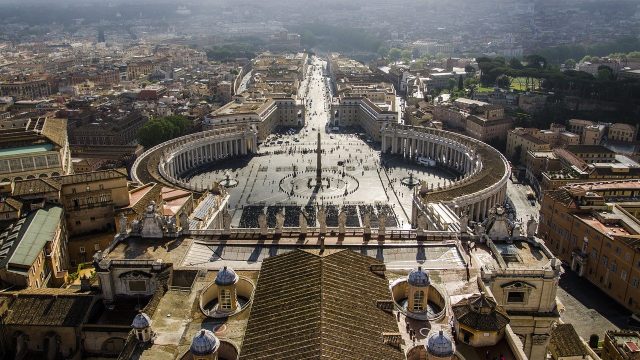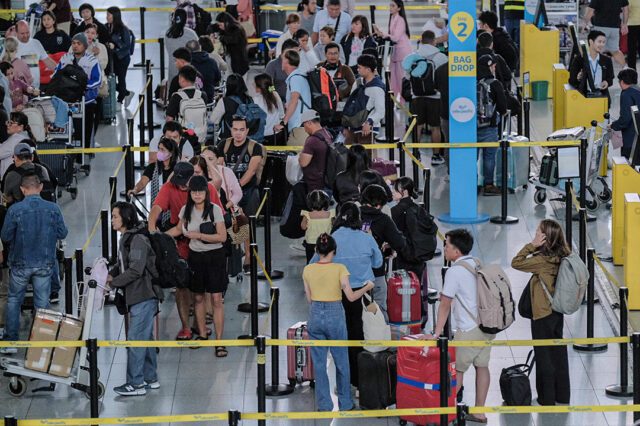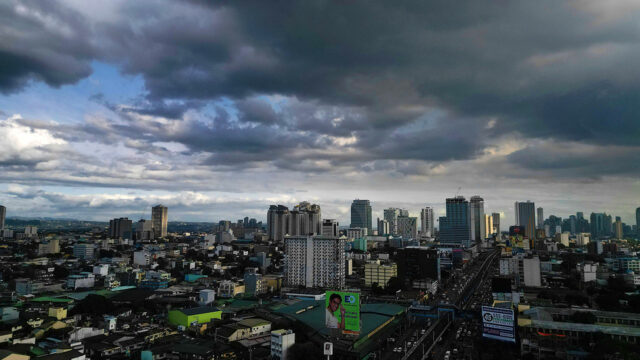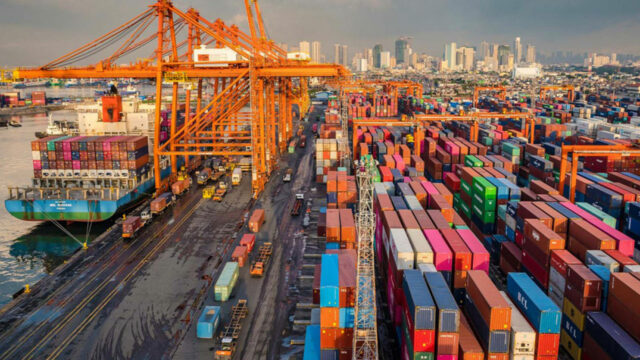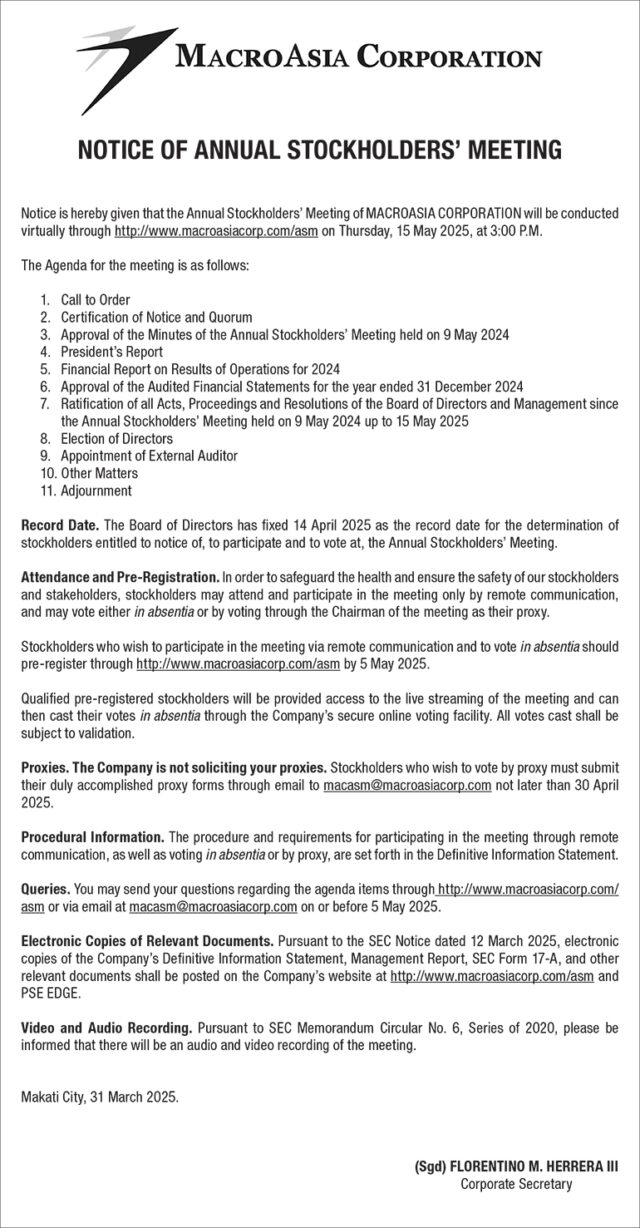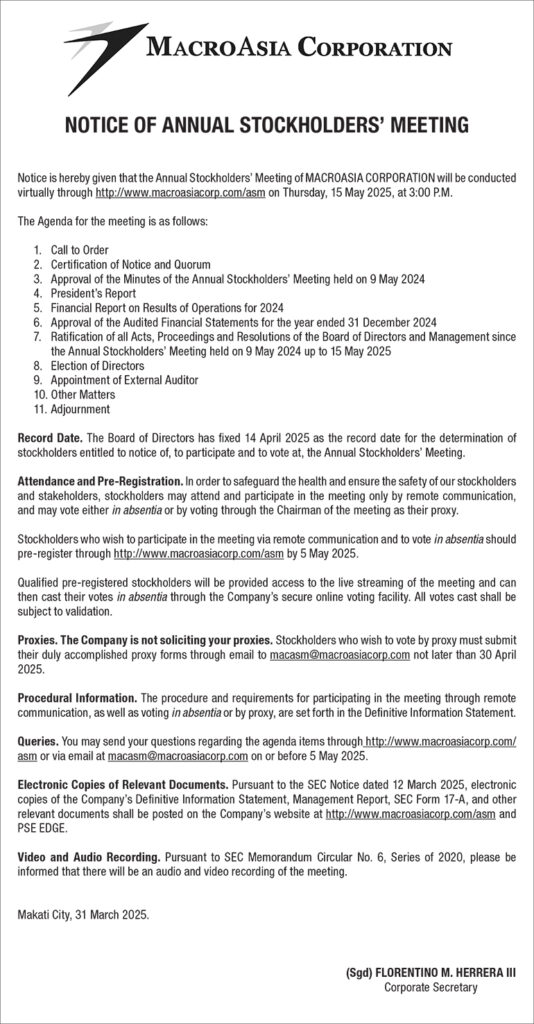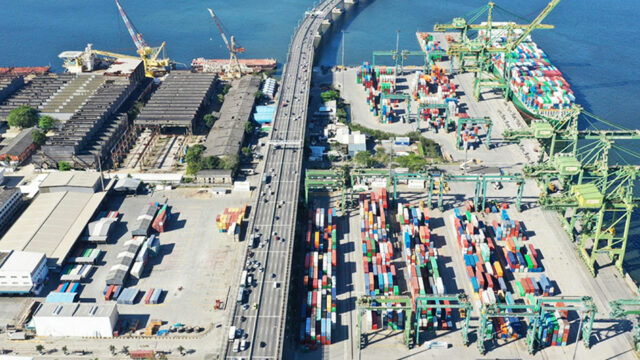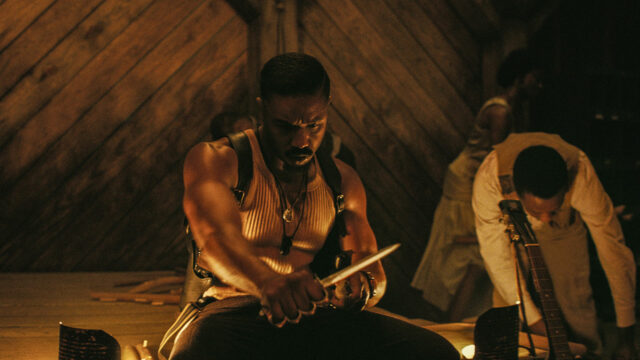Who could be the next pope? Some possible candidates
VATICAN CITY – Predict who the next pope will be at your peril.
An old Italian saying warns against putting faith, or money, in any presumed front-runner ahead of the conclave, the closed-door gathering of cardinals that picks the pontiff. It cautions: “He who enters a conclave as a pope, leaves it as a cardinal”.
But here are some cardinals who are being talked about as “papabili” to succeed Pope Francis, whose death at the age of 88 was announced by the Vatican on Monday. They are listed in alphabetical order.
Jean-Marc Aveline, archbishop of Marseille, French, aged 66.
According to the French press, he is known in some domestic Catholic circles as John XXIV, in a nod to his resemblance to Pope John XXIII, the round-faced reforming pope of the early 1960s.
Pope Francis once quipped that his successor might take the name of John XXIV.
Mr. Aveline is known for his folksy, easy-going nature, his readiness to crack jokes, and his ideological proximity to Francis, especially on immigration and relations with the Muslim world. He is also a serious intellectual, with a doctorate in theology and a degree in philosophy.
He was born in Algeria to a family of Spanish immigrants who moved to France after Algerian independence, and has lived most of his life in Marseille, a port that has been a crossroads of cultures and religions for centuries.
Under Francis, Mr. Aveline has made great career strides, becoming bishop in 2013, archbishop in 2019 and a cardinal three years later. His standing was boosted in September 2023 when he organized an international Church conference on Mediterranean issues at which Pope Francis was the star guest.
If he got the top job, Mr. Aveline would become the first French pope since the 14th century, a turbulent period in which the papacy moved to Avignon.
He would also be the youngest pope since John Paul II. He understands but does not speak Italian – potentially a major drawback for a job that also carries the title Bishop of Rome and requires a lot of familiarity with Roman power games and intrigues.
Cardinal Peter Erdo, Hungarian, aged 72
If Mr. Erdo is elected, he would inevitably be seen as a compromise candidate — someone from the conservative camp who has nonetheless built bridges with Francis‘ progressive world.
Mr. Erdo was already considered a papal contender in the last conclave in 2013 thanks to his extensive Church contacts in Europe and Africa as well as the fact that he was seen as a pioneer of the New Evangelization drive to rekindle the Catholic faith in secularized advanced nations — a top priority for many cardinals.
He ranks as a conservative in theology and in speeches throughout Europe he stresses the Christian roots of the continent. However, he is also seen to be pragmatic and never clashed openly with Francis, unlike other tradition-minded clerics.
That said, he raised eyebrows in the Vatican during the 2015 migrant crisis when he went against Pope Francis‘ call for churches to take in refugees, saying this would amount to human trafficking — seemingly aligning himself with Hungary’s nationalist Prime Minister Viktor Orban.
An expert in Church law, Mr. Erdo has been on a fast track his entire career, becoming a bishop in his 40s and a cardinal in 2003 when he was just 51, making him the youngest member of the College of Cardinals until 2010.
He has excellent Italian, and also speaks German, French, Spanish and Russian — which could help him thaw relations between the Catholic and Russian Orthodox Churches after the deep chill of the war in Ukraine.
Mr. Erdo is not a charismatic speaker, but while this was once undoubtedly viewed as a serious drawback, it could potentially be seen as an advantage this time around if cardinals want a calm papacy following the fireworks of Francis‘ rule.
Cardinal Mario Grech, secretary general of the Synod of Bishops, Maltese, aged 68.
Mr. Grech comes from Gozo, a tiny island that is part of Malta, the smallest country in the European Union. But from small beginnings he has gone on to big things, appointed by Pope Francis to be secretary general of the Synod of Bishops — a heavyweight position within the Vatican.
Initially viewed as a conservative, Mr. Grech has become a torchbearer of Francis‘ reforms within the Church for years, moving sharply with the times.
In 2008, several gay Maltese citizens declared they were leaving the Church in protest at what they saw as the anti-LGBT stance of the then pontiff — Pope Benedict.
Mr. Grech offered them little sympathy at the time, but speaking in the Vatican in 2014, he called for the Church to be more accepting of its LGBT members and creative in finding new ways to address contemporary family situations.
The following day, Pope Francis tapped him on the shoulder at breakfast and complimented him for the speech, marking him out for future promotion.
In 2018, Mr. Grech spoke about how he relished the challenges faced by the Church. “We are going through a period of change. And to me, this is a very positive thing,” he told the Malta Today newspaper. He warned that it would not remain relevant to modern society if it did not move beyond nostalgia for the past.
His views have won him some high-profile enemies, and conservative Cardinal Gerhard Muller memorably turned on him in 2022, belittling his academic profile and accusing him of going against Catholic doctrine.
Mr. Grech’s allies insist he has friends in both the conservative and moderate camps and that, because of his high-profile role, he is known by many cardinals, a clear advantage in a conclave where so many cardinals are relative unknowns to each other.
Coming from a tiny country, his election as pope wouldn’t create any diplomatic or geopolitical headaches.
He has stressed that he always seeks consensus over confrontation. But he has sometimes courted controversy. In 2016 he led a pilgrimage to pray for rain after meeting farmers worried about drought. A local newspaper said it was “a throwback to prehistoric attempts at inducing rain” but a few days after the event, it did indeed start to rain.
Cardinal Juan Jose Omella, archbishop of Barcelona, Spanish, aged 79.
Mr. Omella is a man after Pope Francis‘ own heart. Unassuming and good-natured, he lives a humble life despite his lofty title, dedicating his Church career to pastoral care, promoting social justice and embodying a compassionate and inclusive vision of Catholicism.
“We must not see reality only through the eyes of those who have the most, but also through the eyes of the poor,” he told the Crux news site in April 2022, in words reflecting Francis‘ world vision.
He was born in 1946 in the village of Cretas in northeastern Spain. After being ordained in 1970 he served as a priest in a number of Spanish parishes and also spent a year as a missionary in Zaire, now called Democratic Republic of Congo.
Underscoring his dedication to social causes, from 1999 to 2015 he worked closely with Spain’s Manos Unidas charity, which tackles famine, disease and poverty in the developing world.
He became a bishop in 1996 and was promoted to archbishop of Barcelona in 2015. Just one year later, Francis gave him a red cardinal’s hat — a move seen as a clear endorsement of Mr. Omella’s progressive tendencies, which stand in contrast to more conservative elements that once dominated the Spanish Church.
Mr. Omella is a former president of Spain’s bishops’ conference. He had to deal with the fallout from an independent commission that estimated in 2023 that more than 200,000 minors may have been sexually abused by Spanish clergy over a period of decades.
Mr. Omella has repeatedly asked for forgiveness for the mismanagement of sexual abuse, but has denied that so many children were abused, with an internal Church investigation identifying just 927 victims since the 1940s.
“At the end of the day, numbers do not get us anywhere. The important thing is the people and to make amends as far as possible,” he said. “Blaming is not the way. The problem does not belong to the Church, it belongs to society as a whole.”
In 2023, Pope Francis invited Mr. Omella to join his nine-member kitchen cabinet of cardinals to advise him on questions of governance.
If the conclave decides the Church needs a new approach, then this proximity will count against Mr. Omella.
Cardinal Pietro Parolin, Italian, Vatican diplomat, aged 70.
Mr. Parolin is seen as a compromise candidate between progressives and conservatives. He has been a Church diplomat for most of his life and served as Pope Francis‘ secretary of state since 2013, the year Francis was elected.
The position is similar to that of a prime minister and secretaries of state are often called the “deputy pope” because they rank second to the pontiff in the Vatican hierarchy.
Mr. Parolin previously served as deputy foreign minister under Pope Benedict, who in 2009 appointed him the Vatican’s ambassador in Venezuela, where he defended the Church against moves to weaken it by then-President Hugo Chavez.
He was also the main architect of the Vatican’s rapprochement with China and Vietnam. Conservatives have attacked him for an agreement on the appointment of bishops in communist China. He has defended the agreement saying that while it was not perfect, it avoided a schism and provided some form of communication with the Beijing government.
Mr. Parolin was never a front-line or noisy activist in the Church’s so-called Culture Wars, which centered on issues such as abortion and gay rights, although he did once condemn the legalization of same-sex marriage in many countries as “a defeat for humanity”.
He has defended the Vatican’s power over local Church leaders, criticizing attempts in Germany to allow priests to symbolically bless same-sex couples. He said local Churches cannot make decisions that would end up affecting all Catholics.
A softly spoken and genteel person, Mr. Parolin would return the papacy to the Italians after three successive non-Italian popes – John Paul II of Poland, Benedict of Germany and Francis of Argentina.
He entered the Vatican’s diplomatic service just three years after his priestly ordination in 1980 so his pastoral experience is limited. But a factor in his favour is that he speaks a number of languages.
Cardinal Luis Antonio Gokim Tagle, Filipino, aged 67.
Mr. Tagle is often called the “Asian Francis” because of his similar commitment to social justice and if elected he would be the first pontiff from Asia.
On paper, Mr. Tagle, who generally prefers to be called by his nickname “Chito”, seems to have all the boxes ticked to qualify him to be a pope.
He has had decades of pastoral experience since his ordination to the priesthood in 1982. He then gained administrative experience, first as bishop of Imus and then as archbishop of Manila.
Pope Benedict made him a cardinal in 2012.
In a move seen by some as a strategy by Pope Francis to give Mr. Tagle some Vatican experience, the pope in 2019 transferred him from Manila and appointed him head of the Church’s missionary arm, formally known as the Dicastery for Evangelization.
He comes from what some called “Asia’s Catholic lung,” because the Philippines has the region’s largest Catholic population. His mother was an ethnic Chinese Filipino. He speaks fluent Italian and English.
Between 2015 and 2022, he was the top leader of Caritas Internationalis, a confederation of more than 160 Catholic relief, social service, and development organisations around the world.
In 2022, Pope Francis fired its entire leadership following accusations of bullying and humiliation of employees, and appointed a commissioner to run it. Tagle, who was also removed from his role, had been nominally president but was not involved in the day-to-day operations, which were overseen by a lay director-general.
Announcing the pope‘s dramatic decision, Mr. Tagle told a meeting of the confederation that the changes were a moment for “facing our failures”. It remains to be seen how the saga will impact Mr. Tagle’s chances at the papacy.
Cardinal Joseph Tobin, archbishop of Newark, N.J., American, aged 72.
It’s unlikely the world’s cardinals would pick the first ever U.S. pope, but if they were up for that, Mr. Tobin would seem the likeliest possibility.
A former global leader of a major Catholic religious order known as the Redemptorists, the Detroit native has spent time in countries around the world and speaks Italian, Spanish, French and Portuguese fluently. He also has experience in Vatican service and in top positions across the U.S. church.
Mr. Tobin served a stint as second-in-command of a Vatican office from 2009-12, and was then named by Pope Benedict as archbishop of Indianapolis, Indiana. Pope Francis promoted him to a cardinal in 2016, and later made him the archbishop of Newark.
In this latest role, Mr. Tobin, a big man known for his weight-lifting workout regime, has dealt with one of the highest-profile Catholic scandals in recent years. In 2018, then-Cardinal Theodore McCarrick, one of Tobin’s predecessors in Newark, was removed from ministry over accusations of sexual misconduct with seminarians.
Mr. McCarrick denied any wrongdoing, resigned as a cardinal and was later found guilty by a Vatican tribunal and removed from the priesthood. He died earlier this month.
Mr. Tobin won praise for his handling of the scandal, including a decision to make public previously confidential settlements made between the archdiocese and McCarrick’s alleged victims.
Mr. Tobin is the oldest of 13 children and has said he is a recovering alcoholic. He is known for an attitude of openness toward LGBT people, writing in 2017 that “in too many parts of our church LGBT people have been made to feel unwelcome, excluded, and even shamed”.
Cardinal Peter Kodwo Appiah Turkson, Ghanaian, Vatican official, aged 76.
From humble beginnings in a small African town, Cardinal Peter Turkson has gone on to great things in the Church, making him a contender to become the first pope from sub-Saharan Africa.
He combines a long pastoral background of tending to congregations in Ghana with hands-on experience of leading several Vatican offices, as well as strong communication skills.
The fact he comes from one of the most dynamic regions for the Church, which is struggling against the forces of secularism in its European heartlands, should also bolster his standing.
The fourth son in a family of 10 children, Mr. Turkson was born in Wassaw Nsuta, in what was then called the Gold Coast in the British Empire. His father worked in a nearby mine and doubled as a carpenter while his mother sold vegetables in the market.
He studied at seminaries in Ghana and New York, was ordained in 1975, and then taught in his former Ghanaian seminary and did advanced Biblical studies in Rome.
Pope John Paul II appointed him archbishop of Cape Coast in 1992 and 11 years later made him the first cardinal in the history of the West African state.
Promotions continued under John Paul’s successor, Benedict, who brought him to the Vatican in 2009 and made him the head of the Pontifical Council for Justice and Peace — the body that promotes social justice, human rights and world peace.
In that role, he was one of the pope‘s closest advisors on issues such as climate change and drew much attention by attending conferences such as the Davos economic forum.
Pope Francis merged Mr. Turkson’s department in 2016 with three other offices, leading to what some saw as a power struggle between him and another cardinal.
Mr. Turkson resigned from that role in 2021 and was appointed to head two pontifical academies on sciences and social sciences.
In 2023 he told the BBC he prayed “against” the possibility that he would be elected pope but some of his detractors said that given his media appearances it appeared he was campaigning for the job.
Matteo Maria Zuppi, Italian, archbishop of Bologna, aged 69.
When Mr. Zuppi got a promotion in 2015 and became archbishop of Bologna, national media referred to him as the “Italian Bergoglio”, due to his affinity with Francis, the Argentine pope who was born Jorge Mario Bergoglio.
Mr. Zuppi would be the first Italian pope since 1978.
Much like Pope Francis when he lived in Buenos Aires, Mr. Zuppi is known as a “street priest” who focuses on migrants and the poor, and cares little about pomp and protocol. He goes by the name of “Father Matteo”, and in Bologna he sometimes uses a bicycle rather than an official car.
In a city that loves its meat products, he once made waves when pork-free tortellini were served, as an option, for the feast day of Bologna’s patron saint. Zuppi called the Muslim-friendly move a normal gesture of respect and courtesy.
If he were made pope, conservatives would likely view him with suspicion. Victims of Church sex abuse might also object to him, since the Italian Catholic Church, which he has led since 2022, has been slow to investigate and confront the issue.
The Italian cardinal is closely associated with the Community of Sant’Egidio, a global peace and justice Catholic group based in the historic Rome district of Trastevere, where he spent most of his life as a priest.
Sant’Egidio, sometimes called “the United Nations of Trastevere,” brokered a 1992 peace agreement that ended a 17-year-old civil war in Mozambique, with the help of Zuppi as one of the mediators.
He has engaged in more diplomacy recently as papal envoy for the Russia-Ukraine conflict, concentrating on efforts to repatriate children who Ukraine says have been deported to Russia or Russian-held territories.
Mr. Zuppi is a born-and-bred Roman with a fairly thick regional accent, and solid Catholic family roots.
His father Enrico was the editor of the Sunday supplement of the Vatican newspaper L’Osservatore Romano, while his mother’s uncle, Carlo Confalonieri, was also a cardinal. – Reuters

